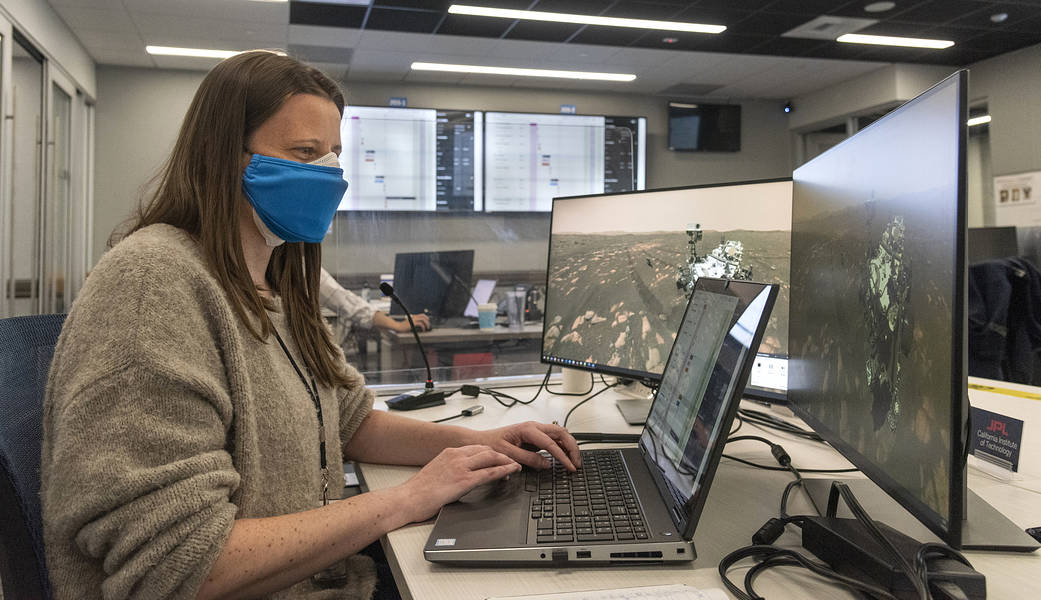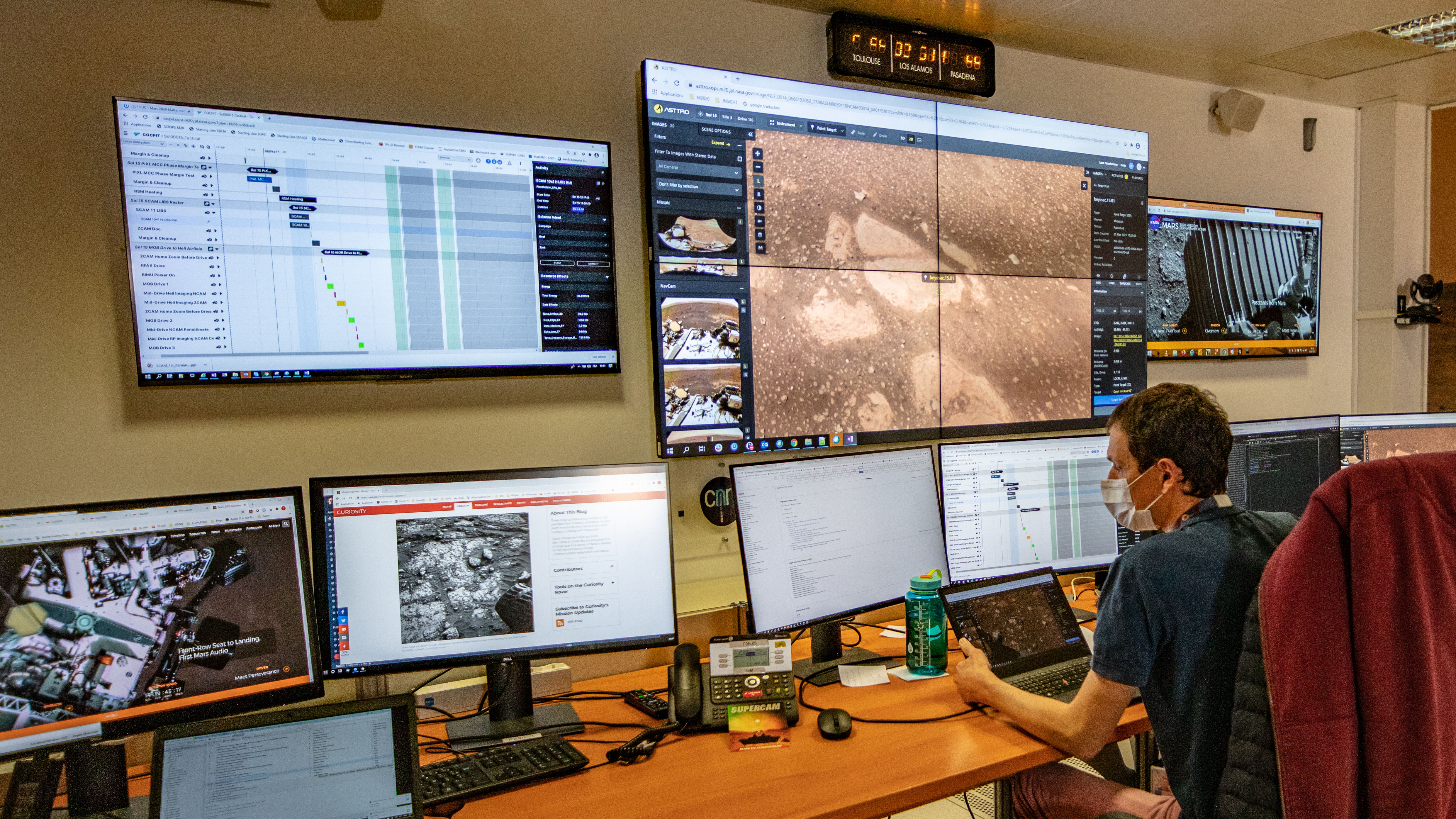Productivity pundits know lots of tricks to make the most of your day, so you can schedule enough time for important tasks while guarding against overload. Planning a day of work for a Martian rover puts a lot of the same strategies into practice.
When the Mars 2020 Perseverance’s driving and science activities begin, dozens of mission personnel will start each planning session with a massive trove of new and exciting data and images from Mars. They have limited time to make sense of the data and create a plan for what the rover will do during the next Martian day. The pressure is on, because in order for the rover to download the plans, they need to send them before the next satellite passes above Perseverance.
The team in charge of coordinating rover activities have a new, NASA-made, web-based application to optimize the planning process and cut precious hours off the time needed to develop next steps. The Component-based Campaign Planning, Implementation, and Tactical software tool, or COCPIT, enables scientists and engineers to lay out all of the rover’s surface activities – from drives to drills – while ensuring the rover has enough time, battery power, data bandwidth, and storage memory, to pull it all off. If a team member were to inadvertently schedule too many activities, cause a conflict in the plan, or overload power or data, COCPIT would flag it and alert rover planners. COCPIT is the first NASA planetary mission planning and scheduling tool to be web-based, which means the international team of scientists can collaboratively plan off-world activities from anywhere on ours; a critical asset in a time of COVID-19 precautions and remote work.
With years of complex activities ahead, involving an assortment of scientific instruments aboard Perseverance, COCPIT will plug into a suite of the robot’s other software tools and help achieve mission success. COCPIT is part of the next generation of planning and scheduling software tools developed by NASA’s Jet Propulsion Laboratory in Southern California in partnership with NASA’s Ames Research Center in California’s Silicon Valley. COCPIT is based off Playbook, a web-based software tool built by the Scheduling and Planning Interfaces for Exploration Team from the Human-Computer Interaction Group at Ames. The team has worked on mission planning and scheduling tools for four other Mars missions and the International Space Station. The team’s work with COCPIT and Playbook is paving the way for future software that supports human and robotic exploration of the Moon, Mars, and beyond.
For more information about Ames’ contributions to the Mars 2020 mission, visit: https://www.nasa.gov/ames/mars2020
Banner image: Andrea Connell, software engineer at NASA’s Jet Propulsion Laboratory in Southern California, works with the Component-based Campaign Planning, Implementation, and Tactical software tool, or COCPIT, in the Mars 2020 Perseverance Tactical Planning Room. Image credit: NASA/JPL-Caltech




























